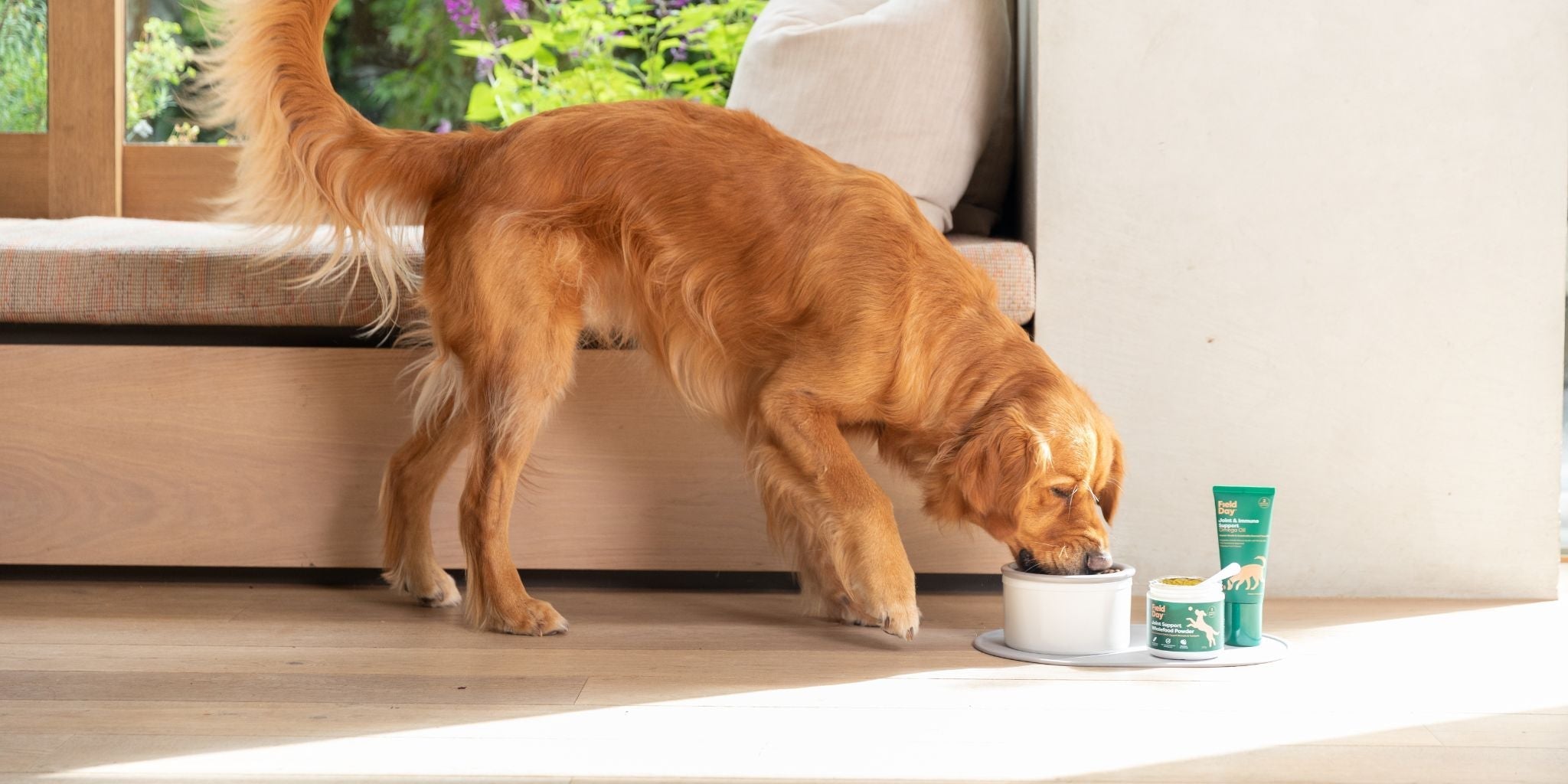Is your furry friend not quite as bouncy as they used to be? Maybe they’re slowing down on walks, hesitating to jump onto the couch, or favouring one leg after a big play session. Just like us, dogs can experience joint issues as they age—or even earlier depending on breed, size and lifestyle.
But the good news? There’s plenty you can do to support their mobility and keep those tails wagging for years to come.
What Causes Joint Issues in Dogs?
Joint discomfort in dogs is often caused by inflammation, wear and tear, or underlying conditions like arthritis or hip dysplasia. Large breeds and older dogs are especially prone, but even younger pups can benefit from proactive joint care.
Common signs of joint issues include:
-
Limping or stiffness (especially after resting)
-
Difficulty sitting, standing or climbing stairs
-
Reduced activity levels or reluctance to play
-
Behavioural changes due to discomfort
How to Keep Your Dog Moving With Ease
1. Nourish From the Inside Out
What your dog eats plays a big role in joint health. Anti-inflammatory foods, healthy fats and natural supplements can help ease discomfort and support long-term mobility.
At Field Day, we’ve created two powerful, vet-approved products designed to help:
-
Joint & Immune Support Omega Oil
Packed with omega-3 fatty acids (EPA & DHA) from tuna oil and green-lipped mussel, this daily topper supports joint flexibility, reduces inflammation and helps boost the immune system. Just drizzle over your dog’s meals—delicious and effective! -
Joint Support Wholefood Powder
A nutrient-rich blend of hemp protein, salmon powder, turmeric, kale, egg yolk and green-lipped mussel. These powerhouse ingredients work together to strengthen joints, improve mobility and support overall wellbeing.
Together, these two products create a comprehensive, natural joint care routine you can feel good about.
2. Keep Them Moving
It might seem counterintuitive, but regular, low-impact exercise is key to keeping joints healthy. Gentle walks, swimming, and controlled playtime help maintain muscle mass, manage weight and reduce joint strain. Just be sure to adjust activity levels to suit your dog’s age and ability.
3. Maintain a Healthy Weight
Extra weight = extra pressure on your dog’s joints. If your pup is carrying a few too many snacks around the middle, talk to your vet about a weight management plan. Combining nutritious, portion-controlled meals with regular activity can make a world of difference.
4. Regular Vet Check-Ups
Catching joint issues early is key. Regular vet visits can help spot signs before they become serious and guide you on the best plan of action—whether that’s lifestyle tweaks, supplements or treatment options.
Whether you’ve got a playful pup or a wise old woofer, our natural joint support products make it easy to give them the support they need—delivered with love at mealtime.





